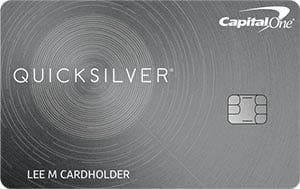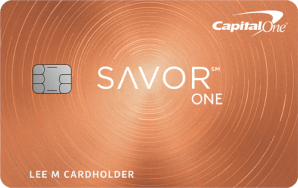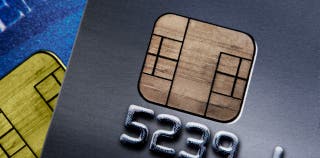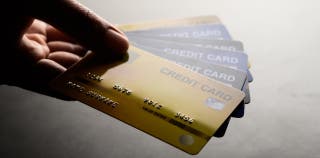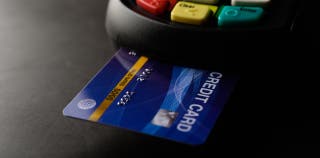Capital One SavorOne vs Quicksilver: Which is better?
Overall, we’re making the call that the Capital One SavorOne Cash Rewards Credit Card slightly trumps the Capital One Quicksilver Cash Rewards Credit Card.
However, these are both solid contenders in the cash-back credit card arena, and either one might serve your wallet well. You also have to consider your own spending habits, such as how much you shop at grocery stores or pay for streaming services, to make the call on which is the best credit card for you.
This table gives an overview of which card is better by category.
| Feature |
Winner |
| Welcome bonus |
Tie - the welcome bonus is identical for these cards. |
| Ongoing rewards |
SavorOne - this card offers 3% cash back on dining, streaming services, entertainment purchases and spending at grocery stores as well as 1% cash back on everything else. |
| Fees |
Tie - Capital One uses the same fee structure for both cards. |
| Interest rates |
Tie - Capital One uses the same interest rates for both cards, but your rates will depend on your credit history and other individual factors. |
| Other benefits |
SavorOne - The benefits and perks for these cards are almost identical, but the SavorOne card comes with an extra cash-back incentive related to Uber and Uber Eats purchases. |
| Eligibility |
Tie - Both cards require excellent credit. |
Who is the Capital One SavorOne card for?
The Capital One SavorOne rewards card is a potentially good choice for those who want to maximize cash-back rewards and know they spend a lot dining out, at grocery stores, or on qualifying entertainment purchases, including streaming subscriptions.
If your biggest expense every month is feeding your family, the SavorOne card might be the better pick for you.
Learn more about this card with our complete Capital One SavorOne card review.
Who is the Capital One Quicksilver card for?
The Capital One Quicksilver Cash Rewards Credit Card is a good option if the SavorOne doesn’t sound quite right for you. If you just want a cash-back card that lets you earn a flat rate across all spending categories, the Quicksilver may be a better choice. You’ll know you’re earning 1.5% cash back without worrying about which card to reach for in your wallet.
To learn more about this credit card, check out our Capital One Quicksilver card review.
Capital One SavorOne vs Quicksilver: Welcome bonus
The SavorOne Cash Rewards and Quicksilver Cash Rewards cards from Capital One offer the same sign-up bonus structure. New card members can earn a $200 welcome bonus when they spend $500 using their card within three months of opening the account.
In either case, that is around $167 of spending each month during the first three months, which is pretty easy to do. You might use your card to pay for groceries or your cell phone bill for those months, paying off your balances every month because these are already expenses you budget for.
Both cards allow you to redeem your sign-up bonus as a statement credit or check. Because the offers are the same, there is not a winner for this category.
Capital One SavorOne vs Quicksilver: Ongoing rewards
The Quicksilver Card lets you earn 1.5% unlimited cash back on all purchases. In contrast, the SavorOne card offers 1% cash back on everyday purchases and 3% cash back on purchases made at grocery stores as well as qualifying entertainment, dining and streaming purchases.
For most people, the SavorOne card is better for ongoing rewards. Consider a hypothetical situation to understand how more cash rewards stack up with the SavorOne card.
Say someone spends $300 a month on groceries, $200 on dining and entertainment, $50 on streaming subscriptions and $400 on other random purchases. If you assume that an individual uses their Quicksilver credit card to make these purchases, they would get 1.5% cash back on a total of $950. That equals $14.25.
Consider the same scenario with the SavorOne card. The individual would get 3% cashback on $550 and 1% cash back on $400, totaling $20.50 in rewards.
SavorOne also offers a limited-time 10% cash back offer for purchases made with Uber Eats or Uber services.
SavorOne also comes out slightly ahead when it comes to redemption options. With both rewards cards, you can redeem rewards to cover specific purchases on your card, as a statement credit or as cash (in the form of a check). You can also use rewards to purchase gift cards or make purchases through a connected PayPal account. SavorOne rewards can also be used on Amazon.
Capital One SavorOne vs Quicksilver: Fees
Neither card comes with an annual fee. You also won’t pay foreign transaction fees if you swipe these cards out of the country or order from an international vendor.
Late payment fees are up to $40 for either card. You’ll also pay a balance transfer fee of 3% for the first 15 months on any balances you transfer from a different card, then 4% at a promotional APR that Capital One may offer you at any other time. If you use either the SavorOne or Quicksilver card to make a cash withdrawal, you’ll pay a cash advance fee for that transaction. The fee is 5% of the advance amount or $5, whichever is greater.
Again, these two cards come up neck and neck in this category, as the fee structure is virtually the same. This is good news in either case because if you pay your statement on time and avoid carrying over any balances, you won’t pay fees. This ensures any cash back you earn really is extra money in your budget.
Capital One SavorOne vs Quicksilver: Interest rates
Both cards include an introductory 0% APR offer on purchases and balance transfers made in the first 15 months after approval. This means you can make a purchase in the first month with either card and pay it off over 15 months without paying any interest.
For example, say you purchase a $1,000 laptop. You can then make 15 payments of around $67 to pay off your purchase without ever accruing interest expenses.
In another hypothetical, say you have a $1,500 balance on another card with high interest. You could transfer that balance to your SavorOne or Quicksilver card and get up to 15 months from your account opening date to pay the balance off without any interest. That’s $100 a month if you stretch it over the entire 15 months. Many people use this type of perk to help pay off credit card debt faster.
After 15 statement cycles, the regular APR on either card depends on your creditworthiness and other factors, such as your existing debt and income. Regular APR ranges for both cards are 19.99% to 29.99%.
Both cards also have a 29.99% APR for cash advances.
Completely aligned fee structures mean we can’t call a winner for this category.
Capital One SavorOne vs Quicksilver: Other benefits
Both the SavorOne card and the Quicksilver card pack a pretty big perks punch.
You’ll get standard Capital One credit card benefits with each, such as:
With the Quicksilver card, you can also get a complimentary Uber One membership for up to six months through November 14, 2024. Here’s where the SavorOne card trumps the Quicksilver card. You get that same complementary membership, but you also get 10% cash back when you use your card to pay for purchases via Uber or Uber Eats.
Capital One SavorOne vs Quicksilver: Eligibility
Capital One lists both of the cards as requiring excellent credit. While the range that is considered “excellent” might vary a little by card company — and also depends on whether you’re looking at a FICO or VantageScore credit score — it’s safe to assume you need a score in the mid-700s or higher.
Because they both require excellent credit, this category is a draw for the SavorOne and Quicksilver cards.
However, if you are looking for a credit card and your score isn’t hitting the excellent range, you still have plenty of options. Capital One offers a number of credit cards that require good credit as opposed to an excellent score, and the same is true of other card issuers. You can also find credit card products designed for those with lackluster or bad credit.
Should I get the Capital One SavorOne or Quicksilver card?
If it comes down to one of these cards over the other, the SavorOne hedges slightly ahead in our data analysis.
The potential for rewards perks is slightly better with the SavorOne card, and with the fees, interest rates and perks being fairly close (if not identical) between the cards, you don’t lose anything making this call.
If neither one of these cards appeals to you but you still want to stick with Capital One, check out our other card reviews to see if a different Capital One card is a better fit.
Should I get both the Capital One SavorOne and Quicksilver cards?
Having multiple credit cards isn’t a bad idea. It creates diversity in your wallet and can help you manage finances with an eye toward minimizing interest expense and maximizing rewards. However, it’s not typically ideal to carry cards that have very similar perks and rewards structures.
Instead, consider balancing either the SavorOne card or Quicksilver card with a credit card that offers unique perks or rewards structures. For example, if you’re a Hilton loyalist, you might find a hotel credit card that offers cash back or travel rewards points on spending with Hilton properties. Then, you can use your SavorOne or Quicksilver card to earn rewards on everyday spending and your travel rewards card to maximize points when you travel.
However, if you just really like Capital One and want to stick with credit cards from its stable, you could maximize cash rewards by holding both of these cards in your wallet. You might do so by using the SavorOne card to pay for anything that would net you the 3% cash rewards and using the Quicksilver card to pay for everything else. The Quicksilver card does offer an extra half a percentage in cash back on those other purchases.
Explore related articles by topic
You’ve viewed 3 of 3 articles
LOAD MORE
